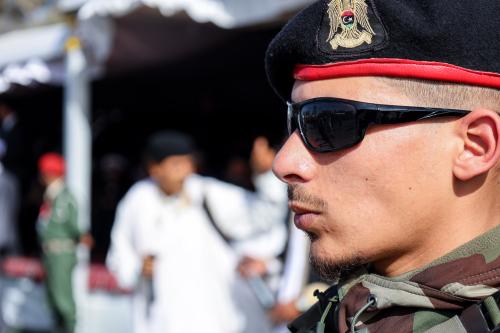In 2015, I predict that President Barack Obama will rethink his plan to have all operational U.S. combat forces out of Afghanistan by the end of 2016.
That goal was announced in spring 2014. It fit in the context of Obama’s longstanding goals, laid out in his 2012 reelection campaign, to end both the Iraq and Afghanistan wars on his watch.
At this point, however, it is clear that the war in Iraq continues, with a renewed (if modest) U.S. role. The related Syria conflict will almost surely require greater U.S. efforts in 2015 and beyond. So Obama’s ambition to be remembered as a peace president who ended the nation’s wars no longer holds water.
The president needn’t worry too much about having to shift course, however. Everyone knows that presidents are not omnipotent, and that world events require changes in U.S. policy. While a healthy debate will surely continue over whether Obama mismanaged, and hurried, the U.S. withdrawal from Iraq in 2011, that is now an historical debate.
The current reality is that, while the United States is fighting the al Qaeda-ist movement that grandiosely calls itself Islamic State using air strikes and aiding allies on the ground, more needs to be done to make sure its militants do not take over larger swaths of Iraq and Syria — and are ultimately beaten back. Obama’s rhetoric, and policies, on these matters demonstrate pragmatism and flexibility, though more innovations and greater efforts will likely be needed.
A similar logic should be applied to Afghanistan. Working with Afghans and international partners, the United States has made great headway there, despite all the frustrations, costs, casualties and setbacks. Progress is fragile, however, and a Taliban takeover or civil war is always a possibility.
Casualties to Afghan soldiers and police are too high. Certain parts of the country, such as chunks of Helmand province, have been lost to the Taliban in recent months. Parts of the east never were in great shape. Pakistan’s role, meanwhile, remains challenging and often unhelpful.
But the successful presidential transition of 2014 and the great improvement in U.S.-Afghan relations taking place under President Ashraf Ghani, combined with the resilience of the Afghan people and temerity of its security forces, all provide grounds for hope. Security in the country’s major cities remains far better than many U.S. press reports would imply.
Obama will not want to discard this hopeful picture by a complete U.S. withdrawal over the next two years. Already, U.S. forces have been drawn down 90 percent from peak levels under Generals Stanley McChrystal, David Petraeus and John Allen from 2010 through 2012. After a major reduction this fall, the 100,000 U.S. personnel who were part of the war in Afghanistan will shrink to just over 10,000. (Numbers had been at roughly 30,000 U.S. troops earlier this year).
Based on the spring 2014 announcement, the plan is to reduce that number by half by the end of 2015. Then go to virtually zero combat forces by the end of 2016, as Obama prepares to leave the White House.
With these three overlapping, chronologically compressed draw-down plans — first to about 10,000, then to fewer than 6,000, then to zero — U.S. forces barely have time to begin a new mission before immediately preparing for its rapid termination.
In previous draw-down plans, Obama had always allowed the first one to play out and conditions to stabilize before determining and announcing the next one. That was true in late 2009, when the president announced the big surge to Afghanistan but simultaneously announced when it would end. And in 2011, when he declared his plans to reduce forces by a third by the end of summer 2012. Now, however, he seems in far too much of a hurry, even though the U.S. troop numbers, costs and battlefield risks are far less.
Leaving Afghanistan entirely in 2016 would be a big mistake. Beyond leaving in jeopardy the U.S. effort to stabilize and bring democracy to Afghanistan, this policy would deprive the United States of bases that it uses to fly drones and launch commando raids in the region — in eastern Afghanistan or western Pakistan — against al Qaeda targets. It is not just a matter of nation-building in Afghanistan. The United States would be sacrificing its ability to defend itself against its declared and dangerous enemies.
In 2015, Obama will have to figure all this out. He will also have to find a way to keep a few thousand U.S. forces at two or three operational bases in Afghanistan to hand off to his successor. The numbers of troops would not greatly exceed those likely to be in Iraq, or for that matter Djibouti, at the same time — perhaps just 10 percent of the number Obama had inherited from President George W. Bush in the war in Afghanistan back in 2009.
Keeping those assets in place to protect American lives, rather than ending the mission prematurely to satisfy an earlier campaign pledge, would be the better way to help the next occupant of the White House. And keep safe the American people — as well as Obama’s own national-security legacy.
This opinion originally appeared on
The Great Debate (Reuters)
.



Commentary
Op-edPrediction: Obama Will Decide to Keep U.S. Troops in Afghanistan beyond 2016
December 22, 2014